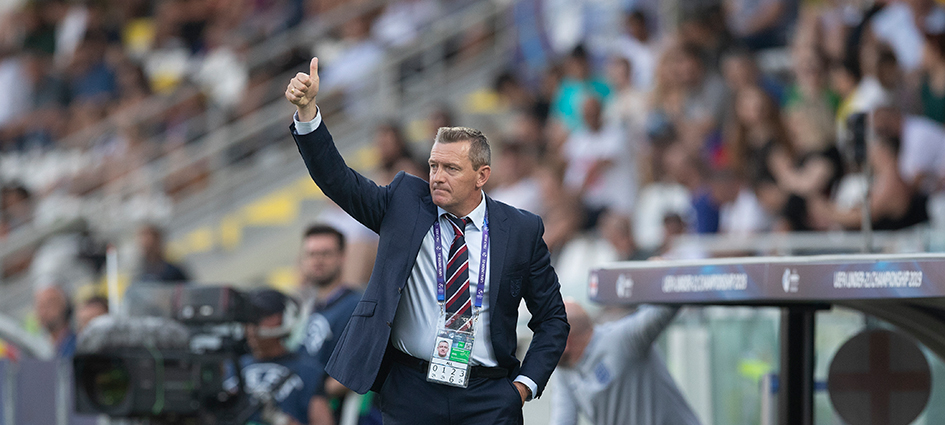England insight

What does half-time look like for England's youth teams?
- Peter Glynn
- 31 March 2017
England U21 head coach, Aidy Boothroyd, provides an insight into the process used by England youth teams during the half-time break.
Aidy Boothroyd, England’s U21 head coach, is adamant that whatever the outcome of 45 minutes of football, half-time must be approached with consistency and without emotion.
“Sometimes the players come in at half-time and it’s a massive high, sometimes it can be a huge low, and sometimes the momentum is in the balance. What's most important is that you remain very calm, but you also remain very structured in what you do,” explains the 46-year-old who joined the England set-up in 2014.
“After the first half it’s up to the coach to facilitate a period of calm where they can come in, have a drink, say what they’ve got to say and quieten their minds.
“We will have somebody in the dressing room whilst the players are talking so that can then get fed back to me. I don’t want to waste time talking about things if they’ve already done it,” adds Boothroyd.
With the players airing their views, the head coach and his staff are busy collecting their thoughts in an adjoining room.
“Me and the other coaches will be in another room and there will be flipchart paper on the wall. There will be our two specialist coaches for in and out of possession, as well as our goalkeeping coach.

“They'll have watched the game looking at their specialism – and in silence on their flipchart they'll write three things, or players, that are affecting the fixture.”
With all the key points collected, it is down to Boothroyd as head coach to decide the final messages to be delivered to the players.
“When we go back into the dressing room, we'll use the key messages to pose questions to the players and give them the chance to come up with the answers. But if they do need a bit of help or a push in the right direction then we’ll do that.
“You’ve got to gauge the feeling of the group when you go in there, and there will be times they want some direction, and there will be times when it is a discussion,” he explains.
One of the tools the England coaching staff use to empower the players and help them work through problems is a Subbuteo table, laid out in the middle of the dressing room.
“We’ll have the Subbuteo table there, which has become quite popular now because players are quite kinaesthetic and they want to grab hold of things and they want to shift them around. We also find the players will talk more when it’s about them in that particular position.
“We want our players to be empowered and we need to facilitate the discussion in different ways to help our players think and become thinking players,” explains Boothroyd.
With only ten minutes of time with the players, the outcome of all discussion has to be clear and concise.
“There will be times when I look at what the coaches have put up on the wall and I’ll ask for further clarification and we’ll discuss it. But I always say to the staff: communicate the messages on the flipchart in a simple way. I need to look at the points and be very clear about what they mean immediately.
“There is also a time for putting observations on the back-burner for later to reflect on. The half-time communication is a case of filtering the things that are going to help us win the game, stay in it or whatever it is that you need to do."


























